Snowed Under

Brief Synopsis
Cast & Crew
Raymond Enright
George Brent
Genevieve Tobin
Glenda Farrell
Patricia Ellis
Frank Mchugh
Film Details
Technical Specs

Synopsis
Playwright Alan Tanner is unable to finish the third act of his new play, so his agent, Arthur Leyton, begs Alan's ex-wife, Alice Merritt, to help Alan with the play. Because she is still in love with him, she agrees. When Alice knocks at the door of Alan's country home, he is delighted to see her. She pretends that she has come to borrow money, but soon she is reading Alan's play. While she is reading, Orlando Rowe, the sheriff, arrives to serve Alan with a warrent for the back alimony he owes to his second wife, Daisy Lowell. Alice invites Orlando and Daisy's lawyer, McBride, inside and offers them a glass of applejack. She says that if Alan doesn't finish the play, there will be no money to pay Daisy and suggests that they wait until the next day to arrest him. When Alice goes upstairs to prepare a room for them, she is startled to find Pat Quinn curled up in one of the beds. Pat, who is a good deal younger than Alan, tells Alice that she is his financee. Then, to everyone's surprise, Daisy, who has been waiting in the car, walks into the house. Later everyone goes to bed except Alice and Alan,who are working on the play, but as the night progresses, the three women end up arguing about Alan. To get away from the noise, Alan runs away to the maid's nearby house, where he completes his play. The next morning, Alan realizes that he still loves Alice and while he is kissing her, Pat walks in on them. Furious, she ends her engagement and McBride, who has fallen in love with her, takes advantage of the moment to make his own play for her. Arthur arrives by dog sled, loves the new act, and Daisy offers to drop her complaint against Alan in return for a part. Alan proposes to Alice, Pat and McBride get together, and Daisy settles for Orlando.

Director
Raymond Enright
Cast
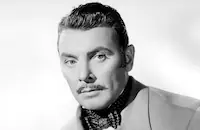
George Brent

Genevieve Tobin

Glenda Farrell
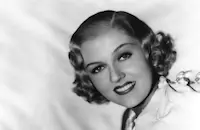
Patricia Ellis
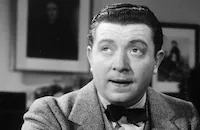
Frank Mchugh
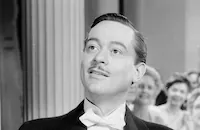
John Eldredge
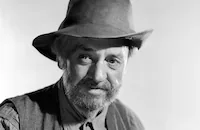
Porter Hall
Helen Lowell
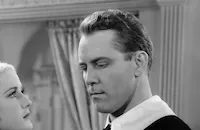
Dick Purcell
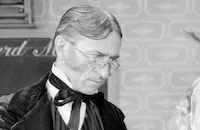
Olin Howland
Joseph King
Alma Lloyd
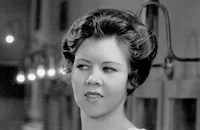
Mary Treen
John Elliott
Stuart Holmes
John T. Murray

Andre Beranger
John Graham
Lester Dorr
Edward Piel Sr.
George Sorrell
Kay Hughes
Jack Herrick
Shirley Lloyd
Milton Kibbee
Eddie Shubert
Iris March
Naomi Judge
Crew
Harry Joe Brown
Edward Chodorov
Hugh Cummings
Robert Haas
F. Hugh Herbert
Brown Holmes
Lee Katz
Mary Mccall Jr.
Harold Mclernon
Orry-kelly
Arthur Todd
Jack L. Warner

Film Details
Technical Specs

Articles
Snowed Under
The Hollywood trade papers loved Snowed Under, with Variety deeming it "a nice comedy entry for the spring." (Amusingly, Variety described the plot as the "old theme of author who is harassed by his wife.") "Director Ray Enright milks every situation for laugh returns without deviating from farce implications of plot... Tobin and Farrell click solidly. Work of this pair rates principal laurels... [Patricia Ellis] does one of her best all-round performances [and Frank McHugh is] topnotch as e-milkman turned deputy."
The Hollywood Reporter called the film "madly hilarious... One [girl] wants to help him, one wants to jail him for back alimony, one wants to marry him... There are so many delightful moments in this show, it is difficult to list the high points."
On the other hand, The New York Times dismissed the picture as a "loud, witless and tiresome farce... They battle and shout through the snowbound lodge and amid the palpably artificial snowdrifts."
As this was a typical Warner Brothers studio programmer, the members of the cast had already appeared together in other films. George Brent and Genevieve Tobin, for instance, had worked together on The Goose and the Gander (1935); Brent and Glenda Farrell on The Keyhole (1933); Brent and Patricia Ellis on 42nd Street (1933) and Stranded (1935); and Farrell and Tobin on Dark Hazard (1934).
Two years after the release of Snowed Under, Genevieve Tobin married Warner Brothers contract director William Keighley. She'd been directed by him in Easy to Love (1934) and would work with him again on Yes, My Darling Daughter (1939) and No Time for Comedy (1940) -- her final film. She retired from the screen at age 41, stayed married to Keighley until his death in 1984, and lived herself until 1995.
Fan favorite Patricia Ellis also retired soon after this film, even though she appeared in seven movies in 1936 and was at her peak. Perhaps that was the problem -- most of her films were minor features and she never broke into the A list. Among the films she did appear in, through a career of over forty films through the 1930s, were Picture Snatcher (1933), the notorious, and now-lost, Convention City (1933), The Case of the Lucky Legs (1935), and Block-Heads (1938).
By Jeremy Arnold

Snowed Under
Quotes
Last summer you wouldn't have turned me out in the snow.- Pat Quinn
Last summer there wasn't any snow.- Alan Tanner
With me by his side, he wouldn't get into jams!- Pat Quinn
When I was married to him, it was jam for breakfast, jam for lunch, and jam for dinner.- Alice Merritt














